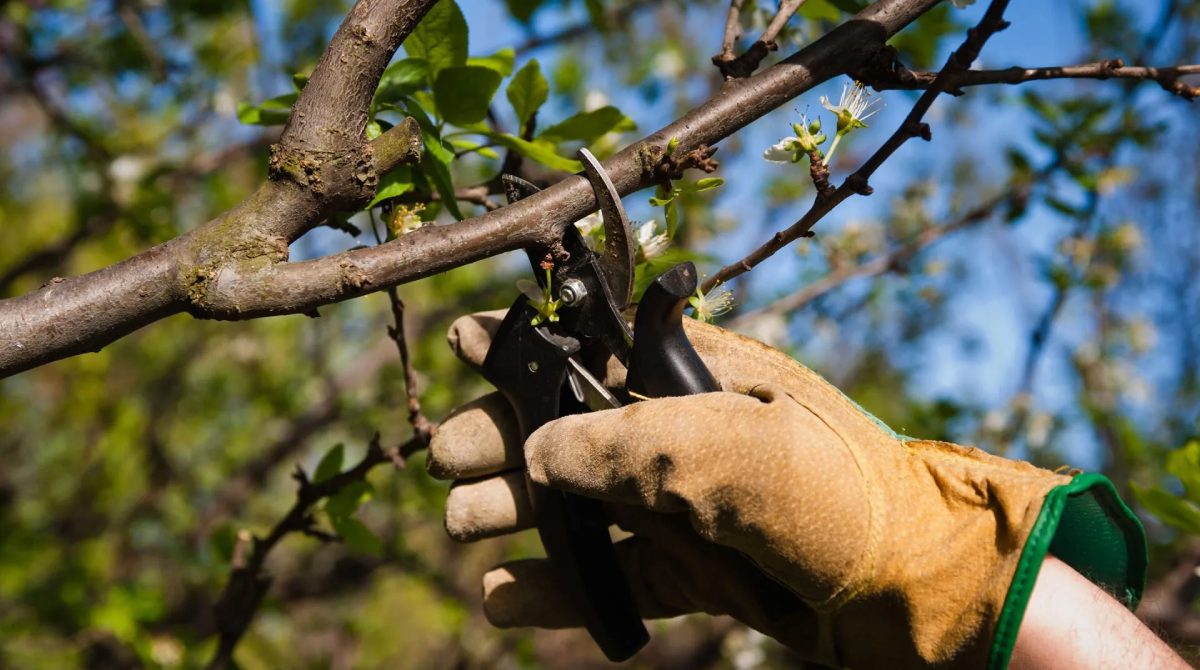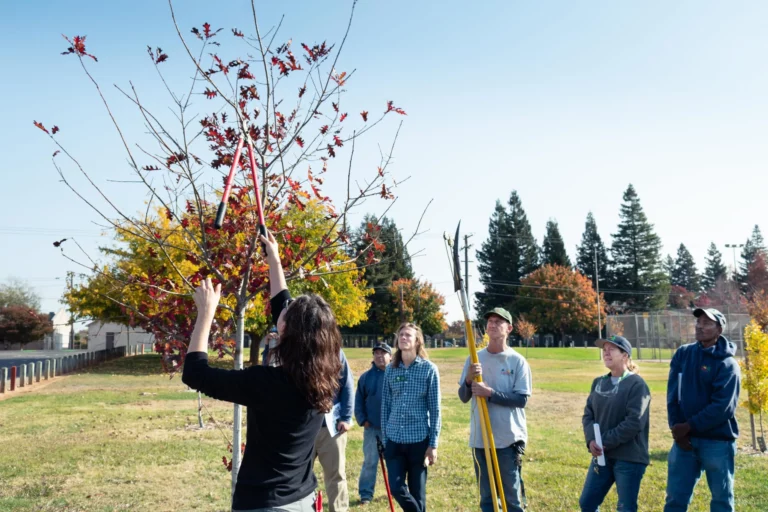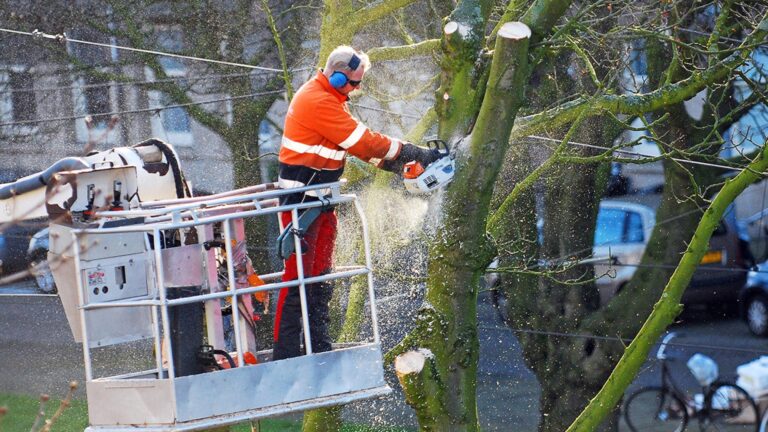Tree pruning is a crucial part of maintaining the health and growth of trees. Proper pruning techniques help trees to thrive and reach their full potential. In this article, we will explore the basics of tree pruning, the science behind it, the art of proper pruning, the risks of neglecting it, and its environmental impact.
Understanding the Basics of Tree Pruning
Tree pruning is the process of removing specific branches or stems from a tree to benefit its overall health and growth. It involves the strategic removal of dead, diseased, or damaged branches, as well as those that interfere with structures or obstruct views. By pruning a tree, we can shape its growth, promote stronger limbs, and reduce the risk of future issues.
When it comes to tree pruning, it’s essential to understand that different trees require different pruning techniques. For example, deciduous trees are best pruned during their dormant season in late winter or early spring, while evergreen trees are often pruned in late winter. Understanding the specific needs of each tree species is crucial for effective pruning.
What is Tree Pruning?
Tree pruning is the intentional removal of certain branches or stems to improve the tree’s structure and health. It should be done with precision and skill to ensure optimal results.
Additionally, tree pruning can also enhance the aesthetic appeal of a tree. By selectively removing branches, you can create a more visually pleasing shape and silhouette. This is particularly important for trees in urban or landscaped areas where appearance is a key consideration.
Why is Tree Pruning Necessary?
Pruning is necessary for several reasons. Firstly, it helps to remove dead or diseased branches, preventing the spread of infections and supporting overall tree health. Secondly, pruning improves air circulation within the tree, reducing the risk of fungal diseases. Lastly, it promotes proper weight distribution among branches, preventing structural issues and limb breakage.
Furthermore, tree pruning can also stimulate new growth and fruit production in fruit-bearing trees. By strategically pruning branches, you can redirect the tree’s energy towards producing more fruit, resulting in a healthier and more abundant harvest. This practice is essential for orchard management and ensuring the long-term productivity of fruit trees.
The Science Behind Tree Pruning
Tree pruning is not just an arbitrary act; it is grounded in scientific principles that enhance tree health and growth.
Understanding the biology of trees is crucial when it comes to pruning. Trees have a natural ability to compartmentalize wounds, and proper pruning techniques take advantage of this. By making clean cuts at the right angle and location, we help the tree seal off the wound effectively, reducing the risk of decay and infection.
The Effect of Pruning on Tree Health
Proper pruning helps trees maintain good health by removing infected or damaged branches that can weaken the overall structure. By removing these branches, we prevent the spread of diseases and improve the tree’s ability to resist pests and pathogens. Click here to learn about green waste removal companies near you
Furthermore, pruning can also improve air circulation and sunlight penetration within the tree canopy. This not only benefits the tree itself but also promotes a healthier environment for beneficial insects and other organisms that contribute to the ecosystem.
The Role of Pruning in Tree Growth
When done correctly, pruning stimulates new growth. By removing certain branches, we direct the tree’s energy towards healthier branches and encourage the development of stronger limbs. Additionally, pruning helps to shape the tree, ensuring it grows in a desirable form.
It’s important to consider the timing of pruning as well. Different tree species have specific growth patterns, and understanding these patterns is essential for maximizing the benefits of pruning. For example, pruning during dormancy can be less stressful for the tree and promote vigorous regrowth in the spring.
The Art of Proper Tree Pruning
Proper tree pruning requires an understanding of timing and technique. It involves knowing when to prune and how to do it correctly.
Tree pruning is not just a task but an art form that requires finesse and knowledge. Beyond the basic principles, there are nuances and subtleties that can make a significant difference in the health and aesthetics of a tree. Understanding these finer points can elevate your pruning skills to the next level.
When to Prune Your Trees
The timing of pruning is key. While minor pruning can be done year-round, major pruning should be done during a tree’s dormant season. This is typically in late winter or early spring before new growth begins. Pruning during this time minimizes stress on the tree and allows for optimal healing.
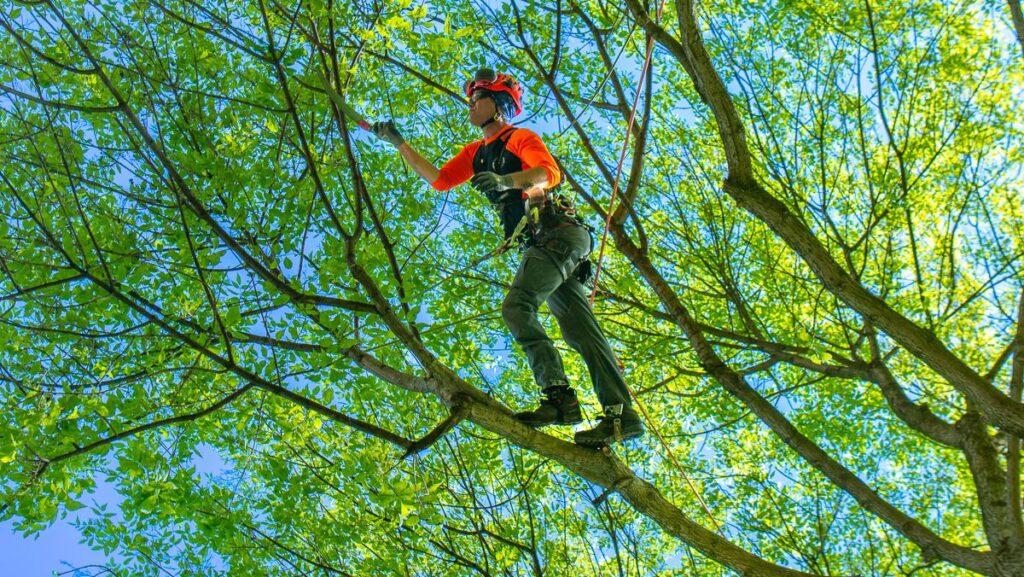
However, there are exceptions to this rule depending on the type of tree. For instance, spring-flowering trees should be pruned right after they bloom to avoid cutting off next year’s flowers. Understanding the specific characteristics of the tree species you are dealing with can help you determine the best time to prune for maximum benefit.
How to Prune Trees Correctly
To prune a tree correctly, start by assessing the specific needs of the tree. Focus on removing dead or diseased branches first, followed by those that pose a safety hazard or interfere with structures. Use proper pruning tools, such as clean, sharp shears or saws, to make clean cuts that promote healing. Be mindful of the branch collar and avoid cutting too close or leaving stubs.
Additionally, consider the overall shape and growth pattern of the tree. Pruning for structure and form can help improve the tree’s health and longevity. By selectively removing certain branches, you can encourage better air circulation and sunlight penetration, which are essential for overall tree vigor.
The Risks of Neglecting Tree Pruning
Neglecting tree pruning can lead to various risks and potential hazards. It is essential to understand the consequences of not prioritizing regular pruning.
Tree pruning is not just about aesthetics; it plays a crucial role in maintaining the health and safety of trees. Proper pruning promotes strong tree structure, reduces the risk of branch failure, and enhances overall tree vitality. By neglecting tree pruning, you are not only jeopardizing the tree’s health but also increasing the likelihood of potential dangers.
Potential Hazards of Overgrown Trees
Overgrown trees can pose a threat to human safety and property. Weak or dead branches can fall unexpectedly, causing damage or injury. Branches that grow too close to structures can also cause structural damage or power outages if they come into contact with electrical lines.
Moreover, overgrown trees can create safety hazards during storms or high winds. The excess weight of unpruned branches can make trees more susceptible to uprooting or limb breakage, posing a significant risk to nearby structures, vehicles, and individuals.
The Impact of Neglected Pruning on Tree Health
When left unpruned, trees can become stressed and more susceptible to diseases and pest infestations. Overcrowded branches restrict air circulation, creating a favorable environment for fungal growth and weakening the tree’s immune system. Neglected pruning may also lead to imbalanced growth and structural issues.
Furthermore, neglected pruning can result in decreased fruit or flower production in ornamental trees, diminishing their aesthetic appeal. Without proper pruning, trees may also develop dense canopies that block sunlight and hinder the growth of grass or plants beneath them, affecting the overall ecosystem of your landscape.
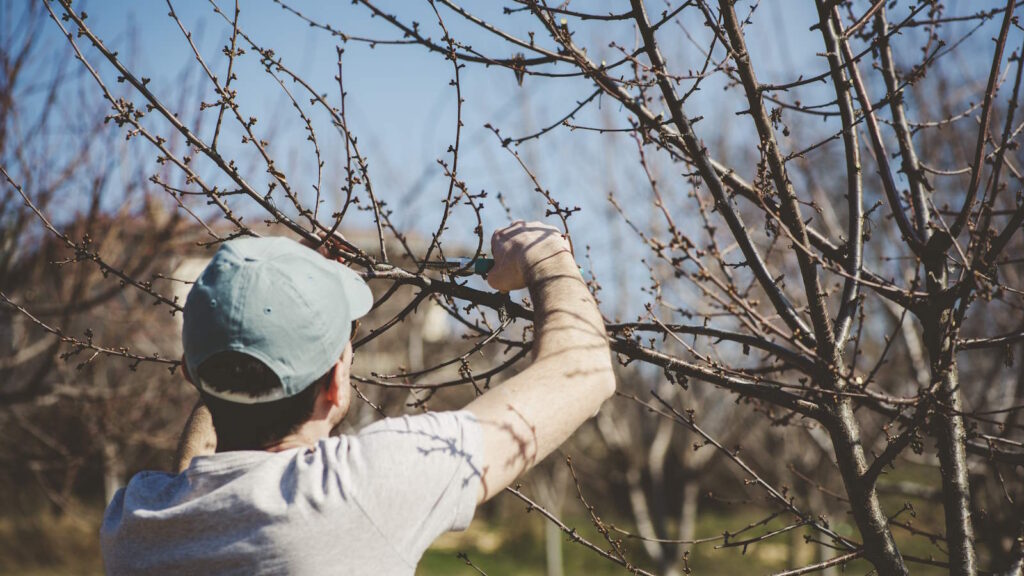
Tree Pruning and Its Environmental Impact
Tree pruning not only benefits the tree itself but also has positive effects on the environment and wildlife.
Pruning and Wildlife
Properly pruned trees provide habitat and food sources for various wildlife species. By removing dead branches, we create cavities for birds and small mammals to nest. Pruning also improves the tree’s fruit production, supporting populations of fruit-eating animals.
Pruning’s Role in Forest Health
In forests, tree pruning plays a vital role in maintaining overall forest health. By removing diseased or infested branches, we prevent the spread of pests and diseases among trees. Proper pruning also encourages tree competition and diversity, fostering a healthier forest ecosystem.
Furthermore, tree pruning can help mitigate the risk of wildfires in forested areas. By removing dead or overhanging branches that could act as fuel for fires, pruning reduces the likelihood of wildfires spreading rapidly through the forest. This proactive approach to forest management not only protects the trees themselves but also minimizes the impact of wildfires on the surrounding environment and wildlife.
Another important aspect of tree pruning is its contribution to the aesthetic appeal of landscapes and urban areas. Well-pruned trees enhance the visual beauty of parks, streets, and gardens, creating a more welcoming and pleasant environment for residents and visitors alike. Proper pruning techniques can shape trees in a way that complements their surroundings, adding value to the overall aesthetic quality of the area.
In conclusion, tree pruning is essential for the healthy growth of trees. Its proper execution involves understanding the basics, following scientific principles, mastering the art, and recognizing the risks of neglect. Moreover, tree pruning contributes positively to the environment and protects wildlife habitats. By prioritizing tree pruning, we can ensure the longevity and vitality of our trees for generations to come.

